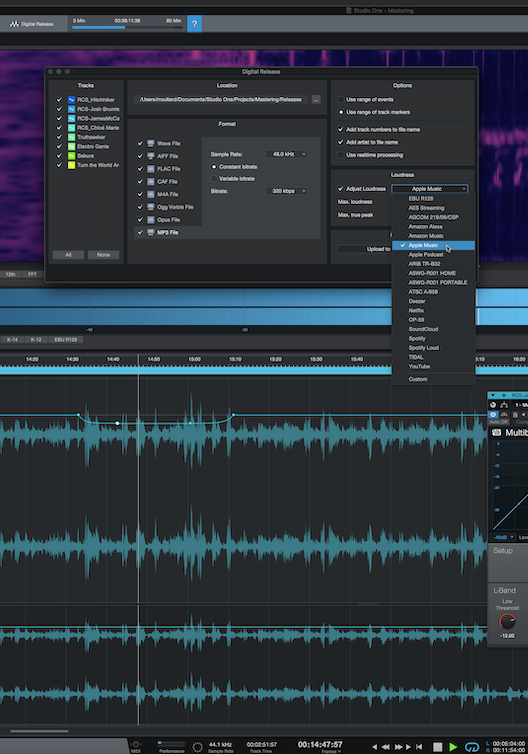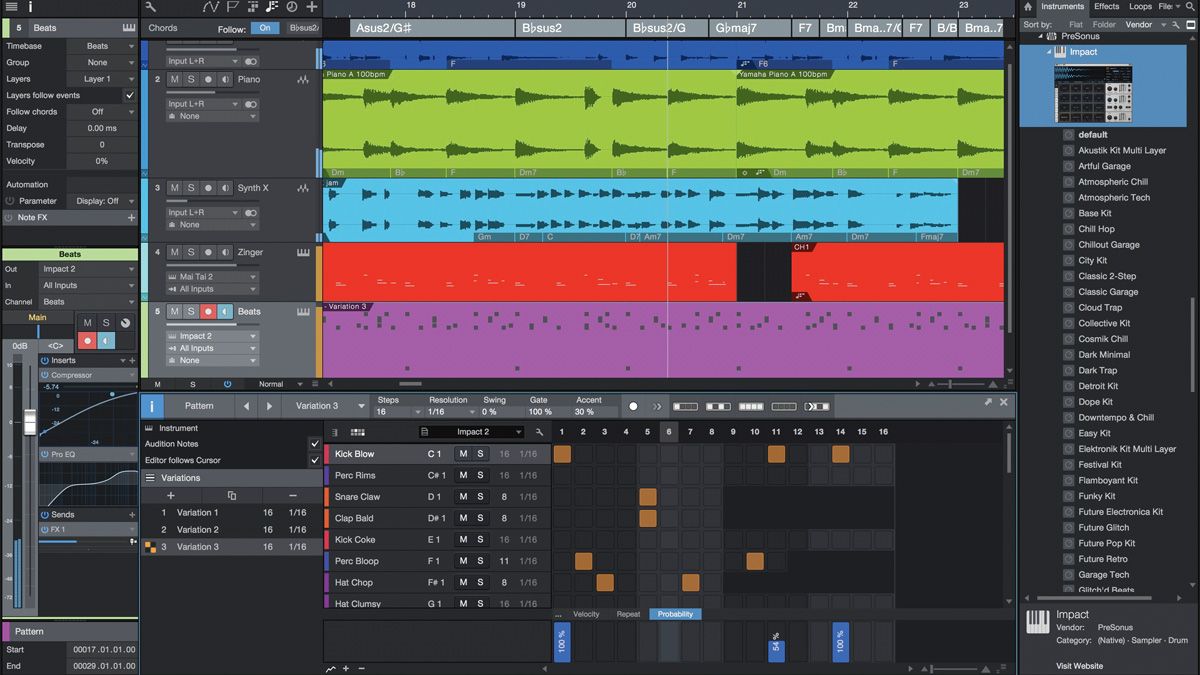

- #PRESONUS STUDIO ONE SOFTWARE INCLUDED MANUAL#
- #PRESONUS STUDIO ONE SOFTWARE INCLUDED PRO#
- #PRESONUS STUDIO ONE SOFTWARE INCLUDED PLUS#
In use, we preferred the manual method of holding Alt/Option and dragging the region edge. Going beyond this, individual tracks can be set to follow tempo changes and be repitched in real time using one of three modes: Drums, Solo and Sound. Studio One includes timestretching, and it can automatically stretch any tempo-tagged audio loops that you import. There are no folder tracks, but editing multiple tracks 'as one' (ie, multitracked drums) can be done via Edit Groups, which also link some console features, such as fader levels. "We found recording audio incredibly easy, and the setup of new audio tracks and routing of signals is much like other apps."īeyond this, most editing functions, such as cutting, copying and fades, can be performed in the main arrange screen, using the six mouse tools (Arrow, Range, Split, Eraser, Paint and Mute).
#PRESONUS STUDIO ONE SOFTWARE INCLUDED PRO#
For multiple takes, you can either use cycle recording (à la Cubase or Logic), or a MIDI and audio track 'layer' system not too unlike Pro Tools playlists. We found recording audio incredibly easy, and the setup of new audio tracks and routing of signals is much like other apps. No doubt you've already spotted the striking similarity to Logic Pro, Ableton Live and Pro Tools - if you've used any big-name DAWs before, you'll be right at home with Studio One. This bottom panel can also house an audio or MIDI editor. To the left, there's a track Inspector to the right, a Browser for files, sounds, instruments and effects (you drag each from the browser into your project), and at the bottom, there's a mix console. Once you've set up a Song, you're presented with an arrange page for recording and sequencing audio and MIDI, with a number of optional side panels. PreSonus has also bundled in Toontrack's EZdrummer Lite and NI Guitar Rig 3 LE.


#PRESONUS STUDIO ONE SOFTWARE INCLUDED PLUS#
Rounding things off, Studio One has around 10GB of sound content, including loops and samples, plus a special sound set for NI's Kore Player. Even so, there's nothing to stop you using an effect send to add a dash of reverb, as this will only incur a delay on the reverb itself (like a pre-delay) and so shouldn't be too distracting. The only thing to note is that tracks using this mode will not include any insert effects you have on the channel. Thus you get an adjustable zero-latency input signal combined with your other cue signals. With this engaged, monitored inputs are routed directly to the respective Cue Mix output using the audio interface's integrated mixer - ie, they don't pass through the Studio One software. However, the real beneficiaries of this system are those using PreSonus FireStudio audio interfaces, as their Cue Mix fader will also include a zero-latency button. Clicking the padlock icon transfers the current channel level and pan to the send controls - in fact, this is the default mode, so activating Cue Mix immediately gives you a monitor mix balance matching your output mix.


 0 kommentar(er)
0 kommentar(er)
